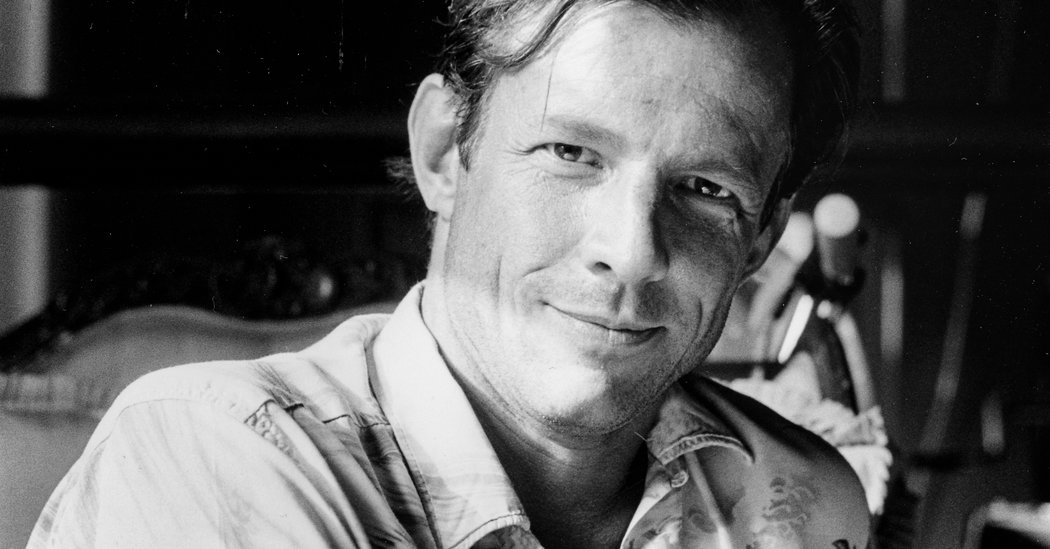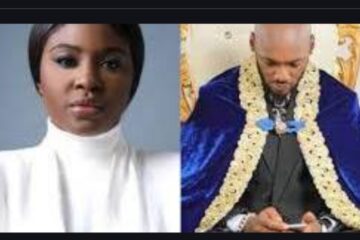Called “the last of the adventurers,” Mr. Beard photographed African fauna at great personal risk, and well into old age could party till dawn. He had been missing for 19 days.

Peter Beard, a New York photographer, artist and naturalist to whom the word “wild” was roundly applied, both for his death-defying photographs of African wildlife and for his own much-publicized days — decades, really — as an amorous, bibulous, pharmaceutically inclined man about town, was found dead in the woods on Sunday, almost three weeks after he disappeared from his home in Montauk on the East End of Long Island. He was 82.
His family confirmed that a body found in Camp Hero State Park in Montauk was that of Mr. Beard.
He had dementia and had experienced at least one stroke. He was last seen on March 31, and the authorities had conducted an extensive search for him.
“We are all heartbroken by the confirmation of our beloved Peter’s death,” the family said in a statement, adding, “He died where he lived: in nature.”
Mr. Beard’s best-known work was the book “The End of the Game,” first published in 1965. Comprising his text and photographs, it documented not only the vanishing romance of Africa — a place long prized by Western colonialists for its open savannas and abundant big game — but also the tragedy of the continent’s imperiled wildlife, in particular the elephant.
Image

In later years, Mr. Beard became famous for embellishing his photographic prints with ink and blood — either human (his own) or animal (from a butcher) — yielding complex, cryptic, multilayered surfaces.
He was also known for the idiosyncratic, genre-bending diaries that he had kept since he was a boy — profuse assemblages of words, images and found objects like stones, feathers, train tickets and toenail clippings — and for the large, even more profuse collages to which the diaries later gave wing.
But as renowned as he was for his work (he received solo exhibitions at the International Center of Photography in Manhattan, the Centre National de la Photographie in Paris and elsewhere), Mr. Beard remained at least as well known for his swashbuckling, highly public private life.
Even by the dashing standards of wildlife photography, his résumé was the stuff of high drama, full of daring, danger, romance and tall tales, many of them actually true. Had Mr. Beard not already existed, he might well have been the result of a collaborative brain wave by Hemingway, F. Scott Fitzgerald and Paul Bowles.
He was matinee-idol handsome and, as an heir to a fortune, wealthy long before his photographs began selling for hundreds of thousands of dollars apiece.
Besides documenting Africa’s vanishing fauna, he photographed some of the world’s most beautiful women in fashion shoots for Vogue, Elle and other magazines. He had well-documented romances with many of them, including Candice Bergen and Lee Radziwill, the sister of Jacqueline Kennedy Onassis.
“The last thing left in nature is the beauty of women, so I’m very happy photographing it,” Mr. Beard told the British newspaper The Observer in 1997.
He discovered one supermodel, Iman, and spun a fabulous legend about her origins. He was married for a time to another, Cheryl Tiegs.
A denizen of Studio 54 in its disco-era heyday, he numbered among his friends the likes of Andy Warhol, Truman Capote, Salvador Dalí, Mrs. Onassis, Grace Jones, the Rolling Stones and Francis Bacon, who painted his portrait more than once.
In 1963 he appeared, nude, in Adolfas Mekas’s avant-garde film “Hallelujah the Hills!,” a critical and popular hit at the inaugural New York Film Festival. He later recalled that “Andy Warhol called it the first streak.”
He seemed to possess the indefatigability of a half-dozen men, and well into old age routinely reveled until dawn, his escapades becoming grist for gossip columnists worldwide.
“Peter Beard — gentleman, socialite, artist, photographer, Lothario, prophet, playboy and fan of recreational drugs — is the last of the adventurers,” The Observer said.
“James Dean grown up,” another British paper, The Evening Standard, called him.
“The hard-partying septuagenarian shutterbug,” The Daily News of New York wrote.
There was the time, for example, as Vanity Fair reported in 1996, that Mr. Beard, after roistering until 5 a.m. at a Nairobi nightclub, emerged the next afternoon from a tent on his ranch in the Kenyan countryside followed by the “four or five” young Ethiopian women he had brought home with him.
“We were very cozy,” he noted.
There was the time in 2013, The New York Post reported, that Mr. Beard, then 75, returned home about 6 a.m. to the Midtown Manhattan apartment he shared with his wife, Nejma Beard, who was also his agent, after a night’s revels.
Ms. Beard did not take kindly to his return — not because of the hour, but because he happened to have two Russian prostitutes in tow. In response, she dialed 911, declared that her husband was attempting suicide and had him committed for a time to a local hospital.
“Beard doesn’t really make art to enhance life for the rest of us,” a critic for The Globe and Mail of Toronto wrote in 1998. “He has created his flamboyant life as a work of art.”
Yet for all its swashbuckling glitter, Mr. Beard’s curriculum vitae was shot through with darkness. His art, reviewers often remarked, seemed haunted by death and loss. So, at times, did his life. In the 1970s, a devastating fire obliterated his home, along with 20 years’ work. In the 1990s, he was attacked and nearly killed by one of the very animals he had long worked to save.
A Black Sheep Son
By his own account the black sheep of an illustrious family, Peter Hill Beard was born in Manhattan on Jan. 22, 1938, to Anson McCook Beard and Roseanne (Hoar) Beard.
A great-grandfather, James J. Hill, known in the press as “the Empire Builder,” founded the Great Northern Railway — running from St. Paul to Seattle — in the mid-19th century. A stepgrandfather was the tobacco magnate Pierre Lorillard V.
Peter’s father was a partner at Delafield & Delafield, a Wall Street brokerage house; his mother, Mr. Beard said long afterward, “suffered from lack of education and the disease of conformity.”
After spending part of his childhood in Alabama, where his father was stationed with the Army Air Forces, Peter was reared on the Upper East Side of Manhattan and Long Island. He began taking photographs as a child, with a Voigtländer bellows camera given to him by a grandmother. He also began keeping the eclectic diaries that would become a professional hallmark.
Yet his obvious artistic gifts, he later said, were lost on his parents.
“Nobody said, ‘Your pictures are good’ or ‘You have a good eye,’” Mr. Beard told the CBS News program “Public Eye” in 1998. What they said, he continued, was: “‘Good hobby. When are you going to do something worthwhile?’”
His future seemed foreordained. He was dispatched to the schools his father had attended, including the Buckley School in New York and Pomfret School in Connecticut.
In 1955, at 17, Peter made his first trip to Africa, in the company of Quentin Keynes, a great-grandson of Charles Darwin. Despite being chased up a tree by an angry hippo he was trying to photograph, he was smitten. In Kenya, he was introduced to the last of a generation of big-game hunters and went shooting — in both senses — with them.
Entering Yale, he embarked on premedical studies but quickly changed course.
“It soon became painfully clear,” Mr. Beard later said, “that human beings were the disease.” He switched to art history, studying with the artist Josef Albers and the art historian Vincent Scully.
He returned to Kenya the summer after his junior year. Many of the photographs he took then would be reproduced in “The End of the Game.”
After graduating from Yale in 1961, he signed on, per his parents’ wishes, as a trainee with the advertising agency J. Walter Thompson. But the gray-flanneled life was not for him, and he soon defected.
Traveling to Denmark, he met and photographed Karen Blixen, who, under the pen name Isak Dinesen had written the 1937 memoir “Out of Africa,” a book Mr. Beard cited as a deep influence. He later bought 45 acres in the countryside outside Nairobi, abutting the coffee farm on which Ms. Blixen had lived.
“The End of the Game,” originally published by Viking Press, made Mr. Beard’s reputation. While a few reviewers took him to task for his seemingly uncritical embrace of the romance of the great white hunter, most praised his dynamic photographs and arresting thesis: that the game preserves meant to safeguard elephants were unintentionally contributing to their destruction.
Reviewing the volume in The New York Times Book Review in 1965, J. Anthony Lukas wrote:
“The portraits of the animals themselves — alive, dying and dead — are superb. These are not ‘pretty’ Walt Disney shots of gazelles leaping through the meadows or parrots chattering in the jungle greenery. Beard’s pictures catch all the saw-toothed savagery of the animals who must show each day that they are fit to survive.”
Mr. Beard’s close studies of wildlife at Tsavo East National Park in Kenya had shown him that the elephant population there, having far outstripped the available food supply, was starving to death by the thousands. Deeming himself a “preservationist,” he argued for the controlled culling of elephant herds, a position that by the 1960s had made many conservationists cringe.
“Conservation,” Mr. Beard once said, “is for guilty people on Park Avenue with poodles and Pekingeses.”
Mr. Beard brought his thesis home even more starkly in subsequent editions of “The End of the Game,” which contained his later aerial photographs of the ravaged Kenyan landscape. In those images, elephant skeletons litter the parched earth like gleaming ghosts.
Ever-Beckoning Kenya
Though Mr. Beard maintained homes in Manhattan and Montauk, he lived and worked in Kenya for long periods. In the mid-1970s, walking down a Nairobi street, he spotted Iman. He introduced her to Wilhelmina Models, the New York agency, and her career was born.
Presenting Iman to the American news media, Mr. Beard gleefully spun an imperial fantasy: that he had come upon her herding cattle in the African bush. In truth, as Iman soon pointed out with what can reasonably be interpreted as a mixture of amusement and irritation, she spoke five languages, had been a political science student at the University of Nairobi and was the daughter of a Somali diplomat.
Mr. Beard’s first marriage, to Minnie Cushing, the daughter of a distinguished Newport, R.I., family, ended in divorce, as did his second, to Ms. Tiegs, to whom he was married in the 1980s. He married Nejma Khanum, the daughter of an Afghan diplomat, in 1986.
For Mr. Beard, the late 20th century was a notably dark time. In 1977, while he was in New York City, an oil furnace exploded at his Montauk home. The house was destroyed, along with paintings by Warhol, Bacon and Picasso and decades’ worth of Mr. Beard’s photographs and diaries.
In September 1996, while picnicking near the Kenya-Tanzania border, he was charged by an elephant, who came at him, he recalled, like “a freight train.”
The elephant ran a tusk through his leg, narrowly missing the femoral artery. Using its head as a battering ram, it crushed Mr. Beard, breaking ribs and fracturing his pelvis in at least a half-dozen places. By the time he arrived at the hospital in Nairobi, according to news reports, he had no pulse.
Doctors revived him, but damage to his optic nerve left him blind. He was told that he might never walk again. He eventually regained his sight, and the ability to walk. He underwent further surgery in New York and lived ever after with more than two-dozen pins in his pelvis.
Nejma Beard filed for divorce in the mid-90s, but the couple reconciled after the attack and remained married.
Besides his wife, he is survived by a daughter, Zara; a granddaughter, and his brothers, Anson Jr. and Samuel.
Among his other books are “Eyelids of Morning” (with Alistair Graham), about crocodiles; “Peter Beard,” a vast compendium of his work; and “Zara’s Tales: Perilous Escapades in Equatorial Africa.”
As Mr. Beard aged, the opinions he voiced freely in interviews sounded increasingly out of step with 21st-century sensibilities. He seemed, to all appearances, to be marooned in the world of the dinner jacket and the great white hunter — a world he simultaneously abhorred and pined for — as the new century passed him by.
In an interview with New York magazine in 2003, for instance, he expressed surprise on being told that the fashion designer Tom Ford was gay.
“But he looks absolutely normal,” Mr. Beard protested, going on to say, “I’m not homophobic,” and to assert that Truman Capote “was one of my best friends.”
Speaking in the same interview about why he had decided to forsake Africa after four decades, Mr. Beard said, “Africans are the only racists I know,” adding, “and that’s because they’re primitive.”
In the end, which Peter Beard will be remembered — the artist or the hedonist — is an open question. Perhaps, as he was clearly aware, those two incarnations need not be mutually exclusive.
In “Zara’s Tales,” written for his daughter, he quotes a line from “The Marriage of Heaven and Hell,” a late-18th-century work by William Blake, that seemed to have been a touchstone for both his life and his art: “You never know what is enough unless you know what is more than enough.”
To those emblematic words, Mr. Beard appended a personal capstone. “If you crave something new, something original, particularly when they keep saying, ‘Less is more,’” he wrote, “remember that I say: Too much is really just fine.”
Stacey Stowe contributed reporting.





